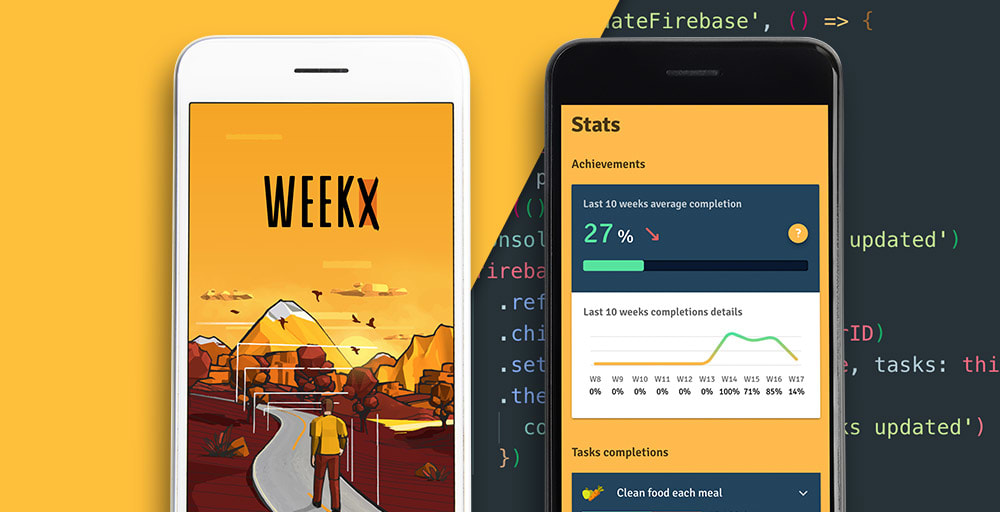
Todo vue.js app WIP#2 : vuex modules + Firebase
This post is part of a full walkthrough of building todo app using vue.js
I’ve been continuously working on my first vue.js app so far (read first post for more infos about this), and might deliver a first alpha by the end of the month. I picked a name (subject to change later : “Weekx”). Obviously, I had to overcome different kind of obstacles, starting with handling time management and periodicity.
Time simulation
Depending on their setups, tasks have to reset at a certain time, or to trigger a record. I used the Date FNS library, which is lighter than the famous moment.js. Very easy to handle thanks to the clear doc. Nonetheless, I struggled a bit more with how to simulate the time passing, to test the app in an efficient way. I ended up with a helper button allowing to quickly pass to the next day with the following structure using isSameDay + addDays
const isTodayCustom = isSameDay( addDays(new Date(Date.now()), addedDays), new Date(this.userData.connexionDateLast) )
Vuex store modularization
The store get quickly messy as the app grows, and, unless working for a very small utility app, I’ll always go with a pre-modularize store for future apps. It’s cleaner. Call to store methods remains concise enough with a structure like the following:
...mapActions({
customActionName1: 'myStoreModule1/myStoreMethod',
customActionName2: 'myStoreModule2/myStoreMethod’
})
Charts
For the stats parts, I took advantage of the native Vuetify features such as sparkline, but have also find something more complete, and found Apexcharts the perfect match. It has a great integration with vue.js and clear examples. Could be a bit overwhelming with numerous possible configurations, with possibly endless data objects in the components, but on the other hand, it handles almost all the possible use-cases. I used it for custom heatmaps to track tasks records on a daily basis with a user-friendly color-code.
Firebase update cycle
One of the headache I experienced was "how to handle data records on the server side and make it work with Vuex?", and more specifically in wich way ? What I’ve learned from the many tutorials I’ve done was :
- Pull data from Firebase and feed Vuex
- Push data on Firebase at each key-actions, wait, then feed Vuex with fresh re-pulled datas from Firebase
This approach didn’t fit really well with my app design because I had to massively rethink the data update cycle so far (write all the logic for each store actions before passing datas to the matching mutation. Another big drawback I encountered is that FIREBASE GET RID OF ALL EMPTY VALUES, and I heavily relied on empty arrays in my logic.
I used the following approach instead:
- Pull datas from server, recreate missing empty values from snashot.val(), feed Vuex
- Store records on Vuex then push data on Firebase without re-pulling data from server (only during initial app-load)
I also made a noob mistake : publish the Firebase snippet on Github :/ I quickly corrected for protected environment variables.
Next
The next key-actions will be:
- Implementing Firebase user authentication (UI + logic)
- Testing with tools such as JEST
- PWA features such as notifications, cache management…)
- Heavy alpha-test phase





